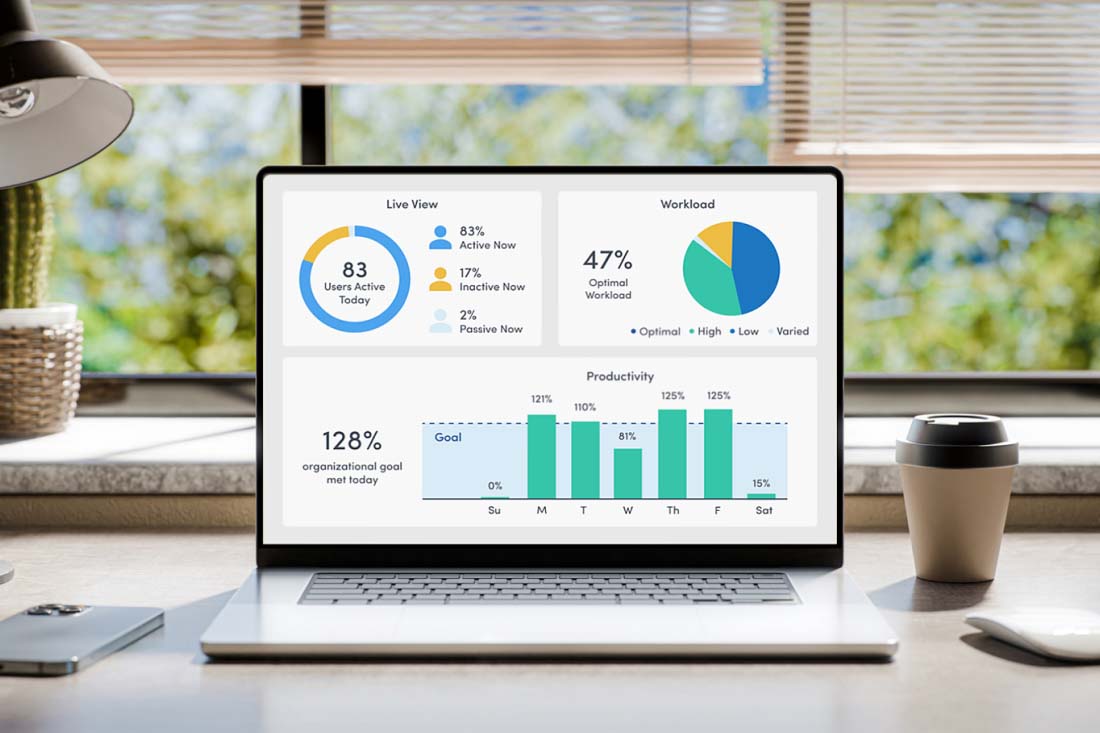As the workplace culture evolves, especially in the wake of the COVID-19 pandemic, organizations find themselves navigating the complexities of a hybrid work model. The hybrid work model integrates remote and in-person work arrangements, enhancing flexibility and productivity. To truly harness the benefits of a hybrid model, workplaces must establish a positive hybrid work culture.
In this post, we’ll share eight best practices for fostering a positive hybrid work culture in your organization.
What is hybrid work culture?
Hybrid work culture refers to a working environment where employees have some flexibility between working remotely and working from an office. This culture includes access to the tools and technology employees need to get work done as well as employees’ morale and mood. Hybrid work requires intentional team collaboration so remote workers and in-office workers can get their work done seamlessly.
Organizations create hybrid work environments in various ways, including part-time remote work, full-time remote roles or rotating schedules that alternate between in-office and remote days. Regardless of what structure an organization chooses, employees need to have the autonomy to balance their professional and personal lives. Organizations must work to engage hybrid teams in different ways than fully in-office workers. A strong hybrid work culture enhances job satisfaction and overall well-being.
Successful hybrid models bring in fresh perspectives and ideas that drive innovation by allowing companies to attract talent from various locations. A good hybrid culture also empowers employees to create their ideal workspaces, whether that means a quiet home office or a collaborative space in the office. By fostering a sense of ownership over employees’ work environments and mental health, organizations with a positive hybrid culture improve their reputation among job seekers.
The importance of a positive hybrid work culture
A positive hybrid work culture not only contributes to employee engagement, but also drives organizational success. Research from Gallup shows hybrid workplaces improve work-life balance, lead to more efficient use of time and reduce burnout or fatigue for employees. Hybrid employees also report that they are more productive, which bolsters your company’s bottom line.
When hybrid workplaces function well, they also reduce costs. Forbes reports that at companies where employees work from home, the organization saves on commercial real estate leasing or rental, heating and cooling and other costs. Turnover is another area where organizations save money by switching to a hybrid model. A study from Stanford found that resignations fell by 33% at companies that switched from fully in-office to hybrid models.
But just offering flexible schedules doesn’t mean you’ll enjoy these benefits. Having a positive hybrid work culture is crucial to making your hybrid work model function well.
8 best practices to establish a positive hybrid work culture
1. Commit to being digital-first
One of the biggest challenges of managing a hybrid team is ensuring equal access to tools and technology so everyone can complete their work and collaborate effectively. To do this, organizations must commit to a digital-first approach. Banish printed materials as much as possible and move your entire workplace online. Ensure employees have secure access to their work from any location. This will clarify issues like version control or deadlines, especially when employees may be working across various time zones or on different work schedules.
2. Set clear expectations
Employees need to fully understand their roles and responsibilities. Human resources teams, supervisors and managers need to be clear about job descriptions, expectations and deadlines. Clarify expected work hours, return-to-office policies and when employees are entitled to personal time. Flexible work arrangements may differ from team to team, department to department or even job role to job role. Organizations must be consistent in their hybrid policies or they’ll find their employees feel confused or even that they’re being treated unfairly.
3. Encourage communication and feedback
Effective communication is the backbone of any successful organization, but it matters even more in a hybrid environment. Use a combination of tools like video conferencing, instant messaging apps and project management tools to facilitate ongoing dialogue and collaboration. Companies should encourage open lines of communication so employees feel comfortable sharing their ideas and concerns. Regular team meetings and one-on-one check-ins support open dialogue and keep everyone aligned on project goals and company policies.
4. Promote work-life balance
To create a thriving hybrid work culture, promoting work-life balance is paramount. Organizations should encourage employees to maintain healthy boundaries between work and personal lives, including encouraging breaks and stopping work after hours. In a recent survey by Buffer, 22% of workers say they have a hard time unplugging from work. This highlights organizations’ responsibility to proactively address work-life balance. By promoting work-life balance, companies foster a culture that prioritizes employee health.
5. Cultivate a social and inclusive culture
Creating a fun, collaborative, and inclusive company culture is important in any work environment, but it’s particularly important — and can be challenging — when it comes to hybrid work. Face-to-face interactions and watercooler-style conversations help hybrid employees stay connected on the days they come into the office, but there’s plenty you can do to create a social company culture online. Leverage internal communication channels to include employees across work locations and schedules in social discussions. Another idea is to hold social hours when the most employees will be in office and include video options so remote workers can participate.
6. Celebrate and recognize achievements
Congratulating employees on a job well done is particularly important in hybrid models where good work can easily go unnoticed. Productivity management software like ActivTrak provides visibility into how employees are working so leadership sees and rewards high-performance behavior, even when employees aren’t in the office. Celebrating milestones like work anniversaries or personal achievements, including birthdays, also contributes to employee morale and helps employees feel connected.
7. Invest in training and development
Training is extremely important for hybrid team members who need to use multiple tools with steep learning curves. Ensure every employee is up-to-speed on technology and has access to resources when issues arise. At the same time, focus on upskilling and career advancement opportunities that include hybrid employees. Employees want opportunities to develop their skills and advance in their careers, and hybrid workers are no different. A Pew Research survey found that 63% of employees who quit jobs did so because they felt they had no opportunities for advancement. Focusing on effective training and development sets your team up for success now and in the long term.
8. Continuously assess hybrid work culture
A hybrid work culture is ever-evolving, and any organization that thinks a “set it and forget it” approach will work is fooling itself. While engagement might be high today, the culture could change tomorrow after implementing a new policy or making personnel changes. For this reason, it’s crucial for businesses to continuously assess their hybrid work culture using data and quantitative metrics from tools like ActivTrak’s hybrid workforce management software. This data empowers organizations to keep a pulse on hybrid teams to ensure the culture remains strong. If they notice a dip in productivity metrics, the company can take action to prevent it from blowing up into a larger issue. On the other hand, a company might expand policies or promote activities that lead to an improvement in hybrid work culture.
Create a positive hybrid work culture with ActivTrak
Remote and hybrid work models pose many challenges for creating and fostering a positive company culture. Organizations must prioritize clear communication, careful planning and a commitment to employee well-being to establish a positive hybrid work culture. Leverage ActivTrak’s hybrid workforce management solution to gain visibility into how work gets done at your company to inform a successful hybrid policy. Champion engagement and lower burnout risk with ActivTrak’s employee engagement tools to ensure employees create healthy work-life balance. Contact our sales team today to see how we can help you create a thriving hybrid work culture that propels your organization forward.





